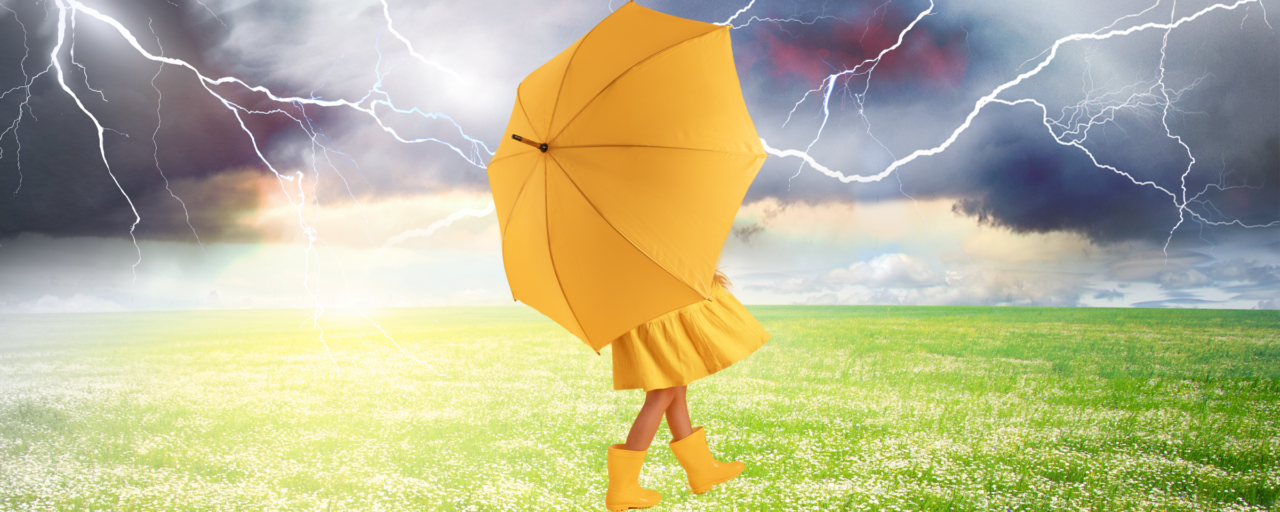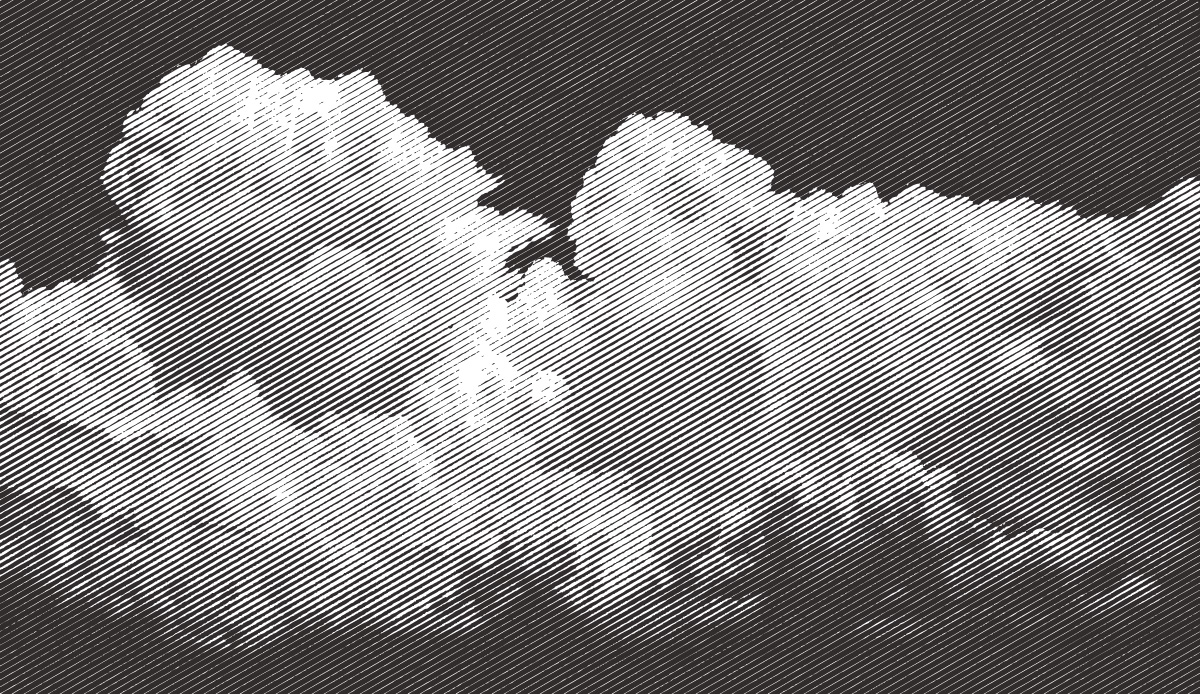


The sense that the climate has gone wild is understandable given that social media and major news outlets report on a daily basis on yet another catastrophic and unprecedented extreme weather event or disaster. That experience is due, in part, to the ubiquity of digital media and communications technology. Just a few decades ago, a major flood in, say, Uzbekistan would have gone largely unnoticed elsewhere, perhaps meriting a line or two in a wire service report. Today, it will likely be captured on video by a cell phone or surveillance camera, and, if it is spectacular enough, will show up in viral social media posts and, increasingly, the homepages of major media outlets.

Did Exxon Make It Rain Today?
An essay in four parts
I. An Extreme Climate
II. Houses Upon the Sand
III. Selling the Story
IV. The Cost of Catastrophism
But the perception among many audiences that these events centrally implicate anthropogenic warming has been driven by something else: a sustained campaign by environmental advocates to move the proximity of climate catastrophe in the public imagination from the uncertain future into the present.
From the very beginning — when Senator Tim Wirth timed the introduction of the first federal proposal to reduce carbon emissions for the heat of the Washington summer and brought James Hansen to Washington to provide groundbreaking testimony on the reality of anthropogenic climate change in a stiflingly hot conference room in the U.S. Senate — environmentalists and their allies have sought to recode extreme weather as climate change. In the 1990s, the Clinton administration invited NBC Today Show host Al Roker and dozens of other TV weather forecasters to the White House to be briefed on global warming, in hopes that they would vouch for the Kyoto Accord and convey the seriousness of climate change to their viewers. Those efforts intensified after Hurricane Katrina struck New Orleans in 2005, with Al Gore using it as a centerpiece in An Inconvenient Truth. A few years later, in 2012, the Union of Concerned Scientists convened a gathering of environmental advocates, litigators, climate scientists, and opinion researchers in La Jolla, California. Their explicit purpose was to develop a public narrative connecting extreme weather events that were already happening, and the damages they were causing, with climate change and the fossil fuel industry.
The proceedings from that gathering, which were subsequently published in a report titled “Establishing Accountability for Climate Change Damages: Lessons from Tobacco Control,” are revealing.
Myles Allen, the climate scientist who is credited with creating the field of “extreme event attribution,” is described in the report as lamenting that “the scientific community has frequently been guilty of talking about the climate of the twenty-second century rather than what’s happening now.” Yet, he and other scientists at the gathering also acknowledged how difficult it is to identify the contributions of climate change to current extreme weather events. “If you want to have statistically significant results about what has already happened,” another scientist, Claudia Tebaldi, noted, “we are far from being able to say anything definitive because the signal is so often overwhelmed by noise.”
While much of the convening was ostensibly focused on litigation strategies, modeled on campaigns against the tobacco industry, the subtext of the entire conversation was how to raise the public salience of a risk that is diffuse, perceived to be far off in time and space, and associated with activities — the combustion of fossil fuels — that bring significant social benefits.
During the meeting, Naomi Oreskes, the Harvard historian of science who popularized the connection between climate and tobacco, argued that scientists should use a different standard of proof for the relationship between climate change and extreme weather events. “When we take these things to the public,” she argued, “we take a standard of evidence applied internally to science and use it externally.” But, she continued, the 95-percent confidence standard that scientists use “is not the Eleventh Commandment. There is nothing in nature that taught us that 95 percent is needed. That is a social convention.”
Others suggested that reframing the attribution of extreme weather to climate change could allow for stronger claims: rather than looking at whether there was any long-term detectable trend in extreme weather, scientists might instead focus on the degree to which climate change increased the likelihood of a given extreme event. And others believed that focusing legal strategies on a villain — fossil fuel companies conspiring to mislead the public about the danger of their product — would result in greater public acceptance of the claims that climate change was the cause of extreme weather.
As it happened, environmental advocates would pursue all of these strategies. Researchers would comb through the archives of fossil fuel companies, going back to the 1970s and ‘80s to show that Exxon and others knew that fossil fuels caused global warming — a claim that was not as scandalous as it sounded, given that much of the research the companies cited in their internal records was actually public at the time. Meanwhile, Friederike Otto, a protégé of Myles Allen, would go on to co-found World Weather Attribution (WWA), which developed a new statistical method for characterizing the probability that any given weather event would have occurred without climate change.
Otto’s methodology attempts to quantify how much more likely climate change made the occurrence of a specific extreme event, say a heat wave that resulted in high temperatures above 101 degrees for a period of five days in a given location. These estimates have been widely misunderstood as quantifying how much more likely climate change made it for the heat wave to occur at all. But that is not what the method actually estimates. Rather, it quantifies changes in the likelihood of the heat wave reaching the precise level of extremity that occurred. In the hypothetical case above, the heat wave would have happened in the absence of climate change, it just would have resulted in high temperatures above 99 degrees over the course of five days instead of above 101 degrees. Otto and WWA are estimating the probability of a heat wave occurring that is marginally hotter than the one that would have occurred without climate change, not the probability of the heat wave occurring at all.
WWA has utilized Otto’s new-fangled method to rapidly produce science connecting extreme events to climate change, with the explicit goal of shaping news coverage. And it has worked. Coverage of climate-related disasters now routinely features WWA analysis, which is frequently used to suggest that climate change is the cause of these events. CBS News, for instance, citing a WWA analysis, reported on its website last summer that heat waves at the time “couldn’t have happened without the continuing buildup of warming gases in the air.” Another story from CNN named six recent droughts and heat waves that “would have been all but impossible without global warming,” again citing Otto’s work.
These headlines misrepresent both the actual role that climate change has played in these events and the actual conclusions of WWA’s analyses. Irrespective of what Exxon or anyone else knew in the 1980s, and contrary to reporting based upon Friederike Otto’s event attribution studies, there is very little evidence that the costs, human or economic, of natural disasters would be significantly lower in a world without climate change. But WWA’s rapid-fire reports — alongside sustained advocacy claiming that a conspiracy by fossil fuel companies to deny the science of climate change is the reason why the world has not embarked upon far-reaching action to address the problem — have given journalists license to ignore the enormous body of research and evidence on the long-term drivers of natural disasters and the impact that climate change has had on them.

Efforts by environmental advocates to attribute extreme events to climate change coincided fortuitously with profound changes in the structure of the media, the business models of many media outlets, and the social and political culture of newsrooms in ways that have incentivized the presentation of extreme events as centrally implicating anthropogenic warming.
Not so long ago, news coverage needed to be credible to multiple audiences whose politics and values spanned a relatively broad spectrum of worldviews and values. But the proliferation of media outlets and platforms in recent decades, first with the rise of cable news and then the Internet, has increasingly fragmented media audiences.
Today, media outlets large and small compete in a far more crowded marketplace to reach much narrower segments of the population. This incentivizes them to tailor their content to the social and political values of their audiences and serve up spectacles that comport with the ideological preferences of the audiences they are trying to reach. For the audiences that elite legacy outlets such as the New York Times now almost exclusively cater to, that means producing a continual stream of catastrophic climate news.
Reporters and editors at these outlets are also well-aligned ideologically with their audiences. A national survey of political journalists and editors working for newspapers at the state and national level conducted in 2022 found that those identifying as Democrats outnumbered those identifying as Republicans by 10 to 1. A 2018 survey of environmental journalists by George Mason University’s Center for Climate Change Communication, meanwhile, found that 70 percent reported trusting information from environmental advocacy organizations versus fewer than 10 percent from business groups. Seventy-one percent reported that they never or rarely included opposing viewpoints in their coverage of climate change.
The alignment of audience-driven incentives for media outlets to produce catastrophic climate content with the environmental commitments of the journalists and editors producing it has been further reinforced by the media’s search for new revenue streams to compensate for the collapse over the last two decades of the subscription and advertising revenue on which newspapers, radio, and television once depended. In the face of these challenges, legacy media outlets have pursued a range of new business strategies to increase revenue, including philanthropic funding and corporate support. The explosion of climate reporting in major venues has been underwritten in significant part by environmental philanthropy. Grantmakers such as the Rockefeller, Walton, Hewlett, and Ford foundations now funnel millions into climate journalism, funding everything from dedicated climate reporting at specialty outlets like Grist and Inside Climate News to general climate coverage and climate-themed events at major media outlets like the Associated Press, CNN, and the Washington Post.
This has gone hand and hand with the development of lucrative new events, in which high-profile legacy media outlets host big environmentally-themed conferences, such as the Economist’s Sustainability Week, the New York Times’s Climate Forward event, or the Washington Post’s This Is Climate summit. Media outlets sell five- and six-figure sponsorships to corporations for conferences whose audience, in turn, is overwhelmingly composed of corporate sustainability professionals with large budgets at their disposal to pay conference registration fees that can run upwards of $1,000 per participant.
Together, the dynamics described above are self-reinforcing and have led to the widespread perception among elite audiences that the climate is spinning out of control. New digital technology bombards us with spectacular footage of extreme weather events. Environmental scientists have created misleading new methods to connect those events to climate change. Catastrophist climate coverage generates clicks from elite audiences. Environmental journalists almost uniformly share the same environmental views as their core audiences. Environmental philanthropy helps pay for climate coverage. And the business side of legacy media has figured out how to monetize it through corporate sponsorships of and participation in lucrative conferences.
In the face of this, it hardly matters that claims that extreme weather and disasters all over the planet are caused by anthropogenic climate change fly in the face of most of the well-documented trends in their frequency, intensity, and cost. Armed with a convenient new sub-science that justified their priors, and convinced that they were combating a decades-long misinformation campaign by the fossil fuel industry, journalists charged ahead, determined to fight fire with fire. Naomi Oreskes’s call for a lower standard of evidence for public communication of climate science has been broadly adopted, not only by environmental advocates but by their allies in the media and the academy.
→ Continue to Part IV of the essay.
Or read a printer-friendly version of the entire article.
Exhausted by science and tech debates that go nowhere?